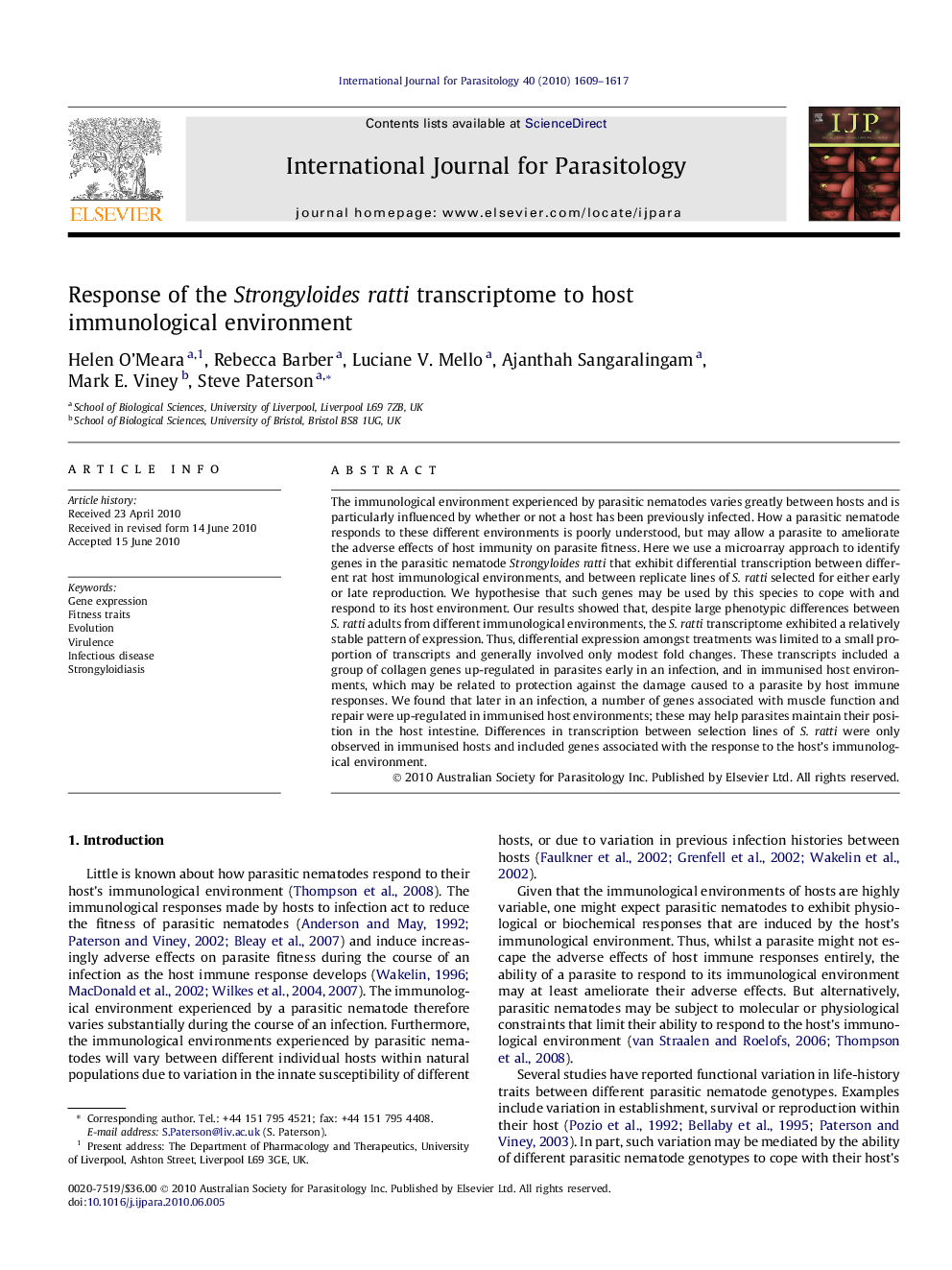| Article ID | Journal | Published Year | Pages | File Type |
|---|---|---|---|---|
| 8500293 | International Journal for Parasitology | 2010 | 9 Pages |
Abstract
The immunological environment experienced by parasitic nematodes varies greatly between hosts and is particularly influenced by whether or not a host has been previously infected. How a parasitic nematode responds to these different environments is poorly understood, but may allow a parasite to ameliorate the adverse effects of host immunity on parasite fitness. Here we use a microarray approach to identify genes in the parasitic nematode Strongyloides ratti that exhibit differential transcription between different rat host immunological environments, and between replicate lines of S. ratti selected for either early or late reproduction. We hypothesise that such genes may be used by this species to cope with and respond to its host environment. Our results showed that, despite large phenotypic differences between S. ratti adults from different immunological environments, the S. ratti transcriptome exhibited a relatively stable pattern of expression. Thus, differential expression amongst treatments was limited to a small proportion of transcripts and generally involved only modest fold changes. These transcripts included a group of collagen genes up-regulated in parasites early in an infection, and in immunised host environments, which may be related to protection against the damage caused to a parasite by host immune responses. We found that later in an infection, a number of genes associated with muscle function and repair were up-regulated in immunised host environments; these may help parasites maintain their position in the host intestine. Differences in transcription between selection lines of S. ratti were only observed in immunised hosts and included genes associated with the response to the host's immunological environment.
Related Topics
Life Sciences
Immunology and Microbiology
Parasitology
Authors
Helen O'Meara, Rebecca Barber, Luciane V. Mello, Ajanthah Sangaralingam, Mark E. Viney, Steve Paterson,
